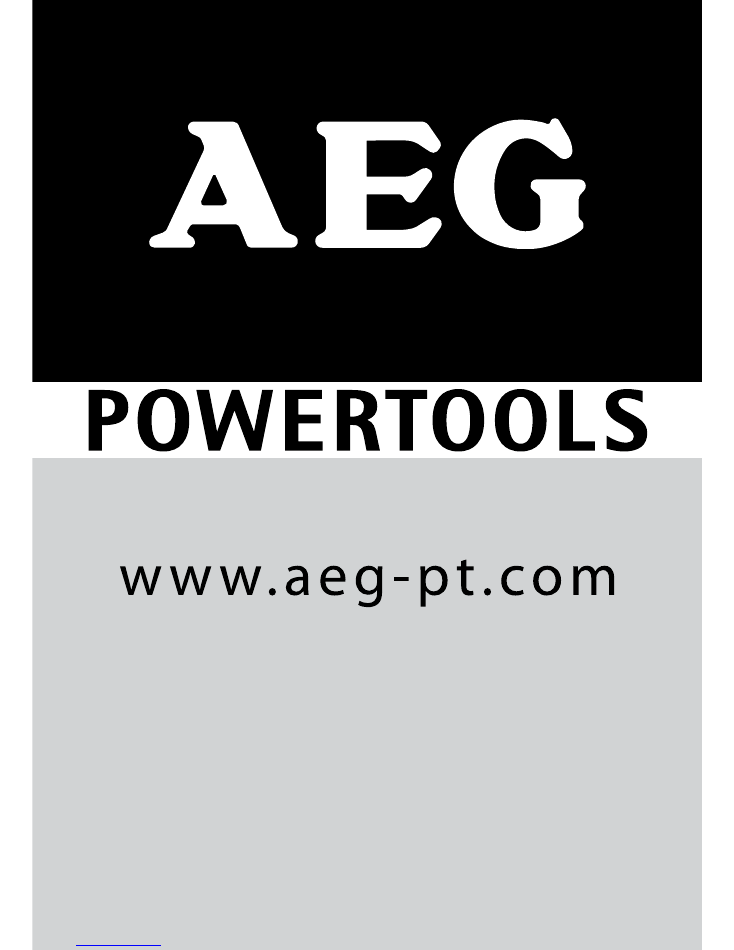Full Text Searchable PDF User Manual
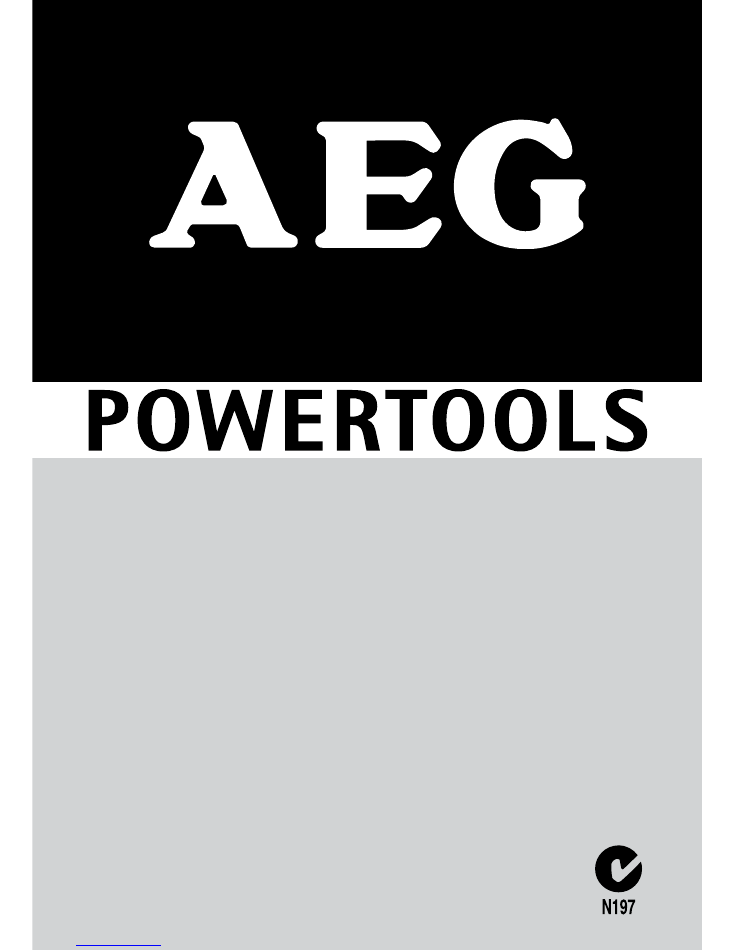
Original Instructions
AGN2400B
PORTABLE GENERATOR SET
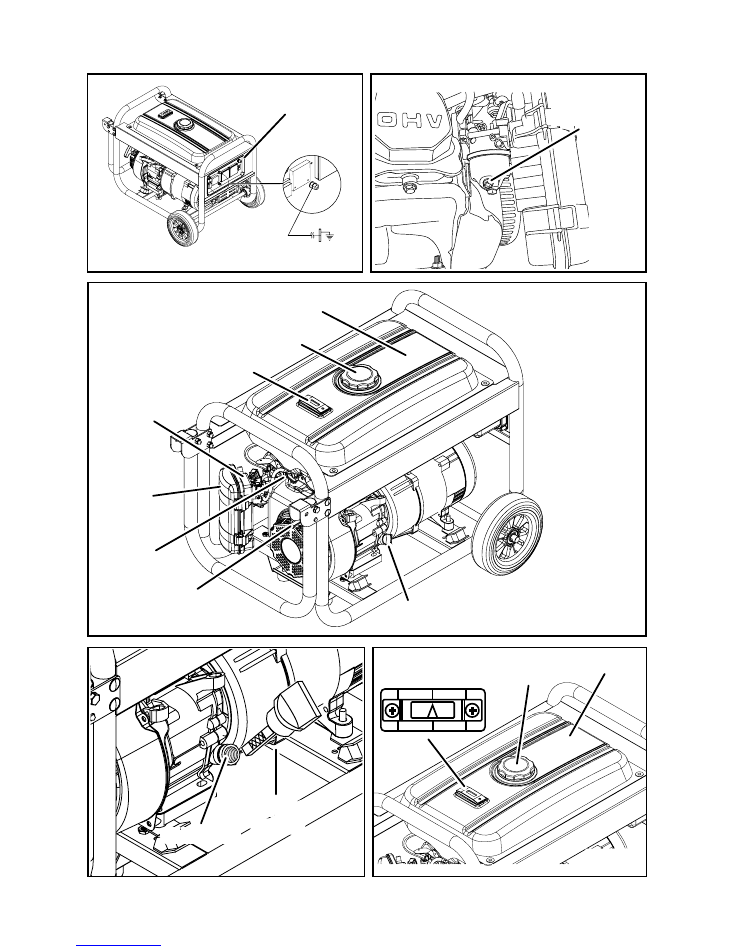
Fig. 1
Fig. 4
Fig. 5
Fig. 3
oil cap/ dipstick
air
filter
choke
lever
fuel
valve
recoil
starter grip
fuel cap
fuel tank
fuel cap
oil cap/
dipstick
oil fill hole
carburetor
drain screw
oil cap/
dipstick
Fig. 2
fuel
level gauge
fuel
level gauge
circuit breaker
oil fill hole
fuel tank
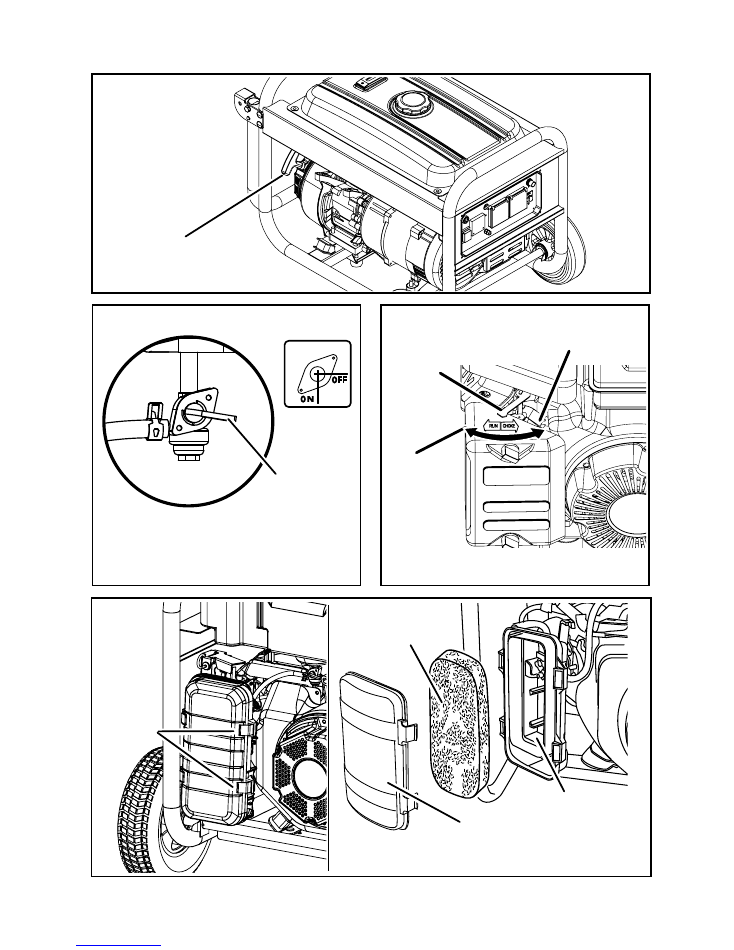
Fig. 6
ON
OFF
ON
OFF
Fig. 8
Fig. 7
RUN CHOKE
choke
lever
to start (choke closed)
to run (choke
open)
recoil
starter grip
fuel valve
latches
air
filter cover
filter
elements
air filter unit
Fig. 9
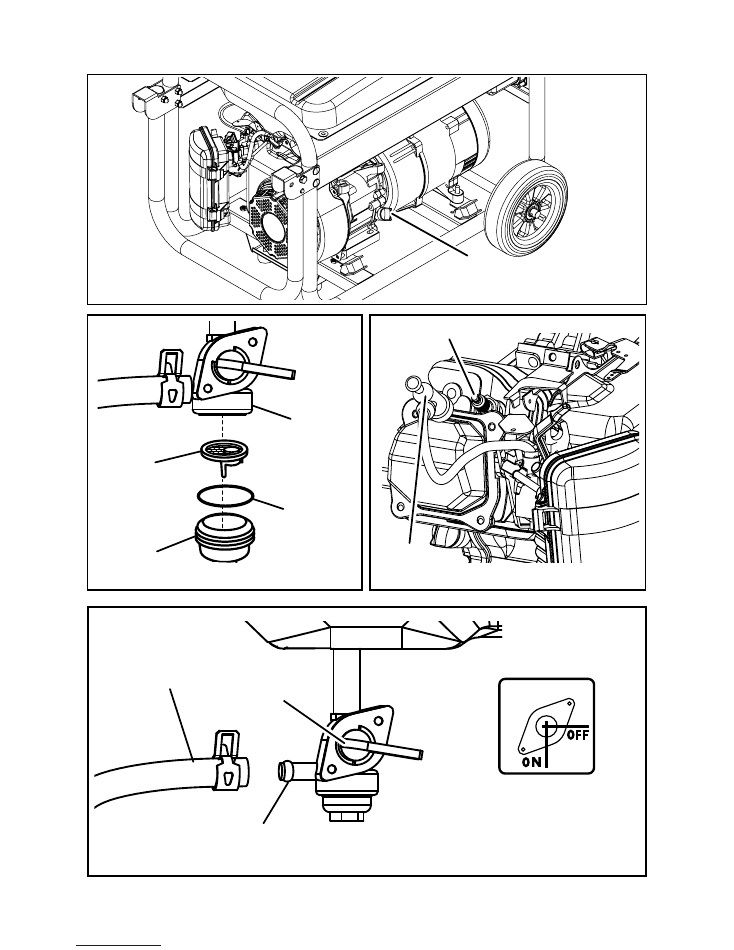
21
2))
Fig. 10
ON
OFF
Fig. 11
Fig. 12
Fig. 13
ON
OFF
ON
OFF
spark plug
cap
spark plug
fuel
line
fuel
valve
barb
fuel
valve
o-ring
filter
sediment
cup
oil cap/ dipstick
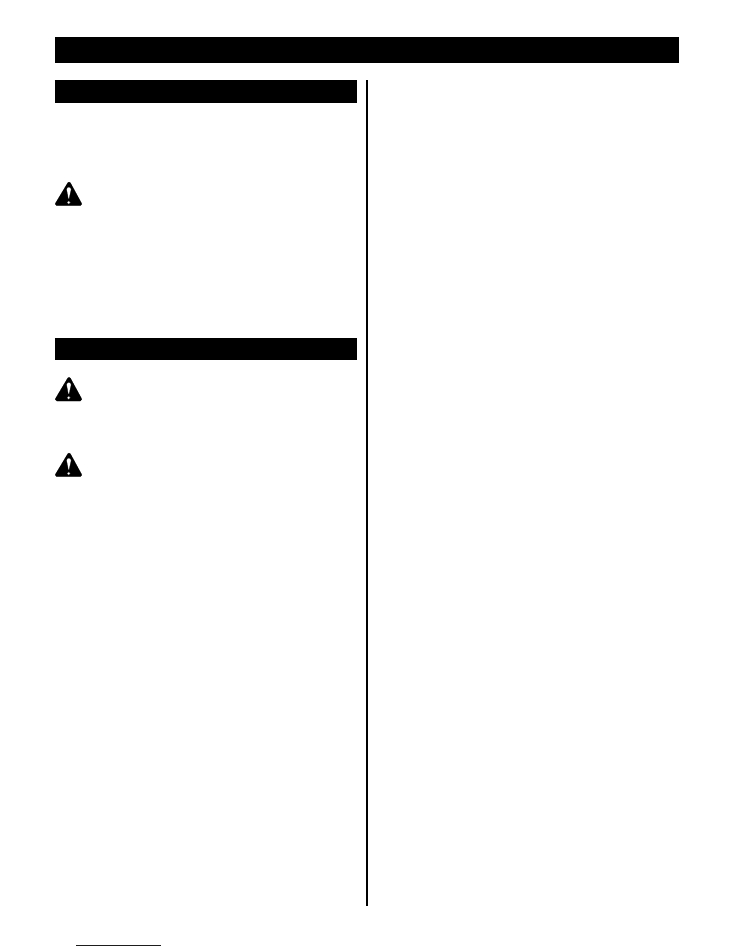
1
English
INTRODUCTION
This product has many features for making its use more pleasant
and enjoyable. Safety, performance, and dependability have
been given top priority in the design of this product, making it
easy to maintain and operate.
DANGER
GROUNDING THE GENERATOR
(See Figure 1)
To avoid the risk of shock or electrocution, the generator
must be properly grounded. The nut and ground terminal
on the frame must always be used to connect the
generator to a suitable ground source. The ground path
should be made with 0.75m
2
size wire. Connect the
terminal of the ground wire between the lock washer
and the nut, and tighten the nut fully. Connect the other
end of the wire securely to a suitable ground source.
ImpORTANT sAfETy INsTRUCTIONs
WARNING:
Read and understand all instructions.
Failure
to follow all instructions listed below may result
in electrocution, fire, and/or carbon monoxide
poisoning, which will cause death or serious injury.
WARNING:
National Electric Code requires the generator to be
grounded to an approved earth ground. Before using
the ground terminal, consult a qualified electrician,
electrical inspector, or local agency having
jurisdiction for local codes or ordinances that apply
to the intended use of the generator.
sAVE THEsE INsTRUCTIONs
This manual contains important instructions that should be
followed during installation and maintenance of the generator
and batteries.
n
Do not allow children or untrained individuals to use this
unit.
n
Never start or run the engine inside a closed or partially
enclosed area. Breathing exhaust fumes will kill you.
n
Wear eye protection as well as hearing protection when
operating this equipment.
n
Keep all bystanders, children, and pets at least 3m away.
n
Wear sturdy and dry shoes or boots. Do not operate while
barefoot.
n
Do not operate the generator when you are tired or under
the influence of drugs, alcohol, or medication.
n
Keep all parts of your body away from any moving parts
and all hot surfaces of the unit.
n
Product users in some states, must comply with fire
prevention regulations. This product is not equipped with
a spark arrestor. Check with the federal, areas, or local
authorities in your area before use.
n
Do not touch bare wire or receptacles.
n
Do not use the generator with electrical cords which are
worn, frayed, bare, or otherwise damaged.
n
Before storing, allow the engine to cool.
n
Do not operate the generator in rain, snow, or wet weather.
n
Empty fuel tank, close fuel valve, and restrain the unit from
moving before transporting in a vehicle.
n
Allow engine to cool for five minutes before refueling.
n
To reduce the risk of fire and burn injury, handle fuel with
care. It is highly flammable.
n
Do not smoke while handling fuel.
n
Store fuel in a container approved for unleaded fuel.
n
Position the unit on level ground, stop engine, and allow
to cool before refueling.
n
Loosen fuel cap slowly to release pressure and to keep
fuel from escaping around the cap.
n
Tighten the fuel cap securely after refueling.
n
Wipe spilled fuel from the unit.
n
Never attempt to burn off spilled fuel under any
circumstances.
n
Use only authorised replacement parts and accessories
and follow instructions in the Maintenance section of this
manual. Use of unauthorised parts or failure to follow
Maintenance instructions may create a risk of shock or
injury.
n
Maintain the unit per maintenance instructions in this
Operator’s Manual.
n
Inspect the unit before each use for loose fasteners, fuel
leaks, etc. Replace damaged parts.
n
The generators vibrate in normal use. During and after
the use of the generator, inspect the generator as well as
extension cords and power supply cords connected to it
for damage resulting from vibration. Have damaged items
repaired or replaced as necessary. Do not use plugs or
cords that show signs of damage such as broken or cracked
insulation or damaged blades.
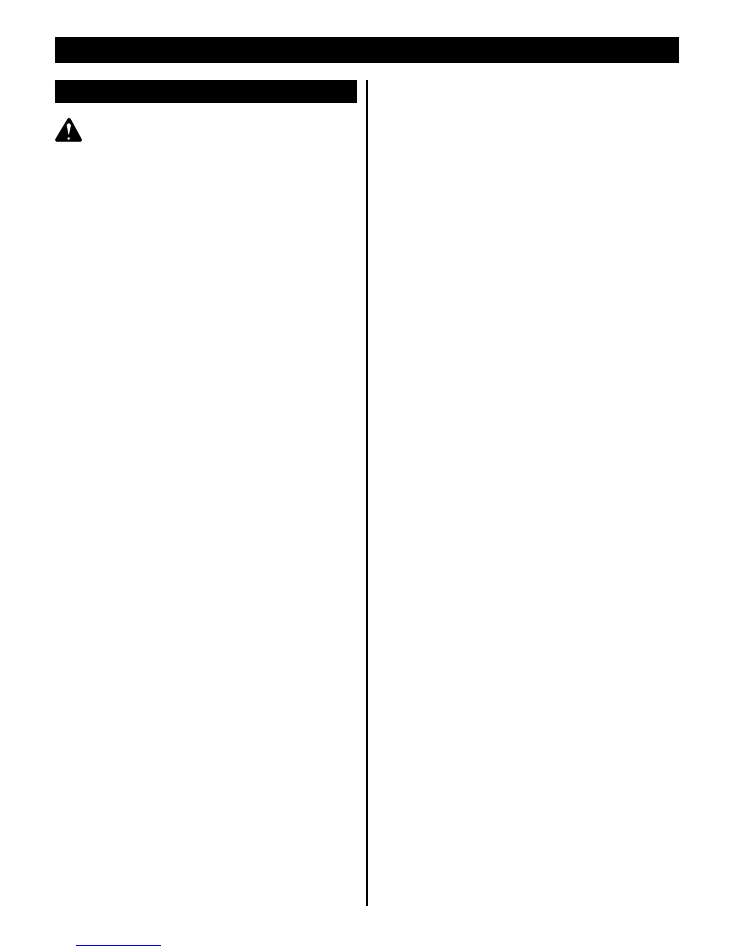
2
English
spECIfIC sAfETy RULEs
WARNING:
When this generator is used to supply a building
wiring system:
the generator must be installed by
a qualified electrician and connected to a transfer
switch as a separately derived system in accordance
with NFPA 70, National Electrical Code. The
generator shall be connected through a transfer
switch that switches all conductors other than the
equipment grounding conductor. Failure to isolate
the generator from power utility can result in death or
injury to electric utility workers.
n
Exhaust contains poisonous carbon monoxide, a
colorless, odorless gas. Breathing exhaust can cause
loss of consciousness and can lead to death. If running
in a confined or partially-enclosed area, the air may
contain a dangerous amount of carbon monoxide. To
keep exhaust fumes from building up, always provide
adequate ventilation.
n
Always use a battery-powered carbon monoxide
detector when running the generator. If you begin to feel
sick, dizzy, or weak while using the generator, shut it off
and get to fresh air immediately. See a doctor. You may
have carbon monoxide poisoning.
n
Place the generator on a flat, stable surface with a slope
of no more than 4°.
n
Operate in a well-ventilated, well-lit area isolated from
working areas to avoid noise interference.
n
Operating the generator in wet conditions could result in
electrocution. Keep the unit dry.
n
Keep the generator a minimum of 1m away from all
types of combustible material.
n
Do not operate the generator near hazardous material.
n
Do not operate the generator at a gas or natural gas
filling station.
n
Do not touch the muffler or cylinder during or
immediately after use; they are HOT and will cause burn
injury.
n
Do not connect to a building’s electrical system unless a
transfer switch has been properly installed by a qualified
electrician.
n
Do not allow the generator’s gas tank to overflow
when filling. Fill to 25mm below the top neck of the
unleaded fuel tank to allow for fuel expansion. Check the
ventilation hole inside the fuel tank cap for debris. Do not
block the vent.
n
Do not smoke when filling the generator with unleaded
fuel.
n
Allow the engine to remain in a shut-down condition for
at least five minutes before adding unleaded fuel or oil.
n
Do not remove the oil dipstick or the fuel tank cap when
the engine is running.
n
Pay close attention to all safety labels located on the
generator.
n
Keep children a minimum of 10 feet away from the
generator at all times.
n
The unit operates best in temperatures between 5°C and
40°C with a relative humidity of 30~95%.
n
Do not operate the generator at altitudes above 1000m.
n
When using extension lines or mobile distribution
networks the total length of lines for a cross section of
1.5mm
2
should not exceed 60m; for a cross section of
2.5mm
2
this should not exceed 100m.
n
The generating set must not be connected to other
power sources
n
Save these instructions. Refer to them frequently and use
them to instruct others who may use this tool. If you loan
someone this tool, loan them these instructions also.
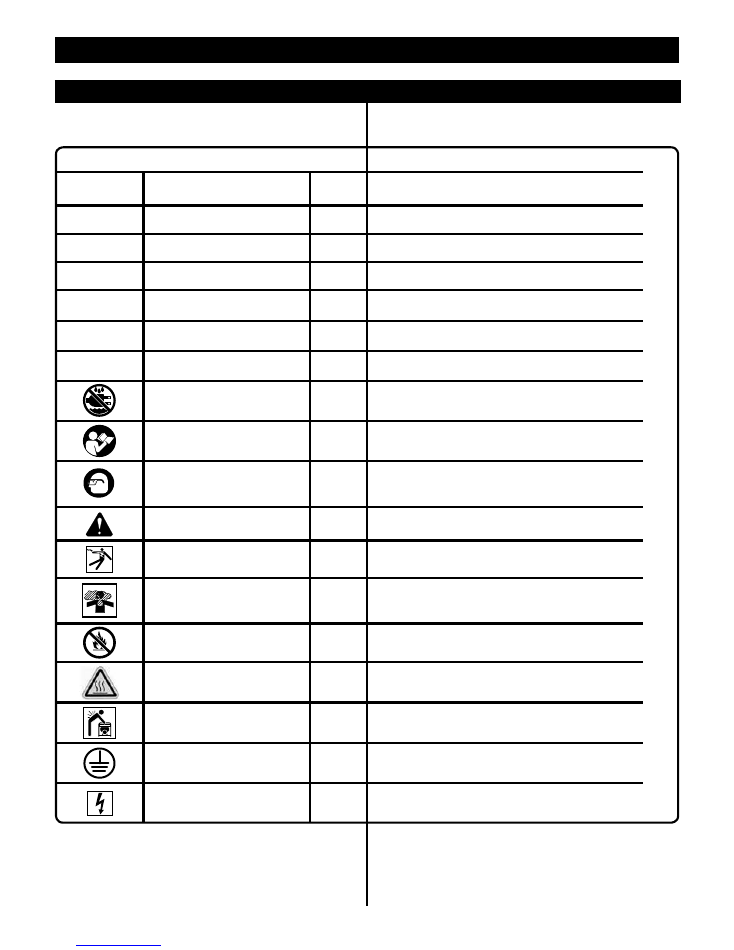
3
English
symBOLs
Some of the following symbols may be used on this tool. Please study them and learn their meaning.
Proper interpretation of these symbols will allow you to operate the tool better and safer.
symBOL
NAmE
DEsIGNATION/EXpLANATION
V
Volts
Voltage
A
Amperes
Current
Hz
Hertz
Frequency (cycles per second)
W
Watt
Power
hrs
Hours
Time
gal
Gallon
Volume
qt
Quart
Volume
Wet Conditions Alert
Do not expose to rain or use in damp locations.
Read The Operator’s Manual
To reduce the risk of injury, the user must read and understand
the operator’s manual before using this product.
Eye Protection
Always wear safety goggles or safety glasses with side shields
and, as necessary, a full face shield when operating this product.
Safety Alert
Precautions that involve your safety.
Electric Shock
Failure to use in dry conditions and to observe safe practices
can result in electric shock.
Toxic Fumes
Running the generator gives off carbon monoxide, an odorless,
colorless, poison gas. Breathing carbon monoxide can cause
nausea, fainting, or death.
Fire/Explosion
Fuel and its vapors are extremely flammable and explosive. Fire
or explosion can cause severe burns or death.
Hot Surface
To reduce the risk of injury or damage, avoid contact with any
hot surface.
Lifting Hazard
To reduce the risk of serious injury, avoid attempting to lift the
generator alone.
Ground
Consult with local electrician to determine grounding
requirements before operation.
Electrocution
Failure to properly ground generator can result in electrocution,
especially if the generator is equipped with a wheel kit.

4
English

5
English
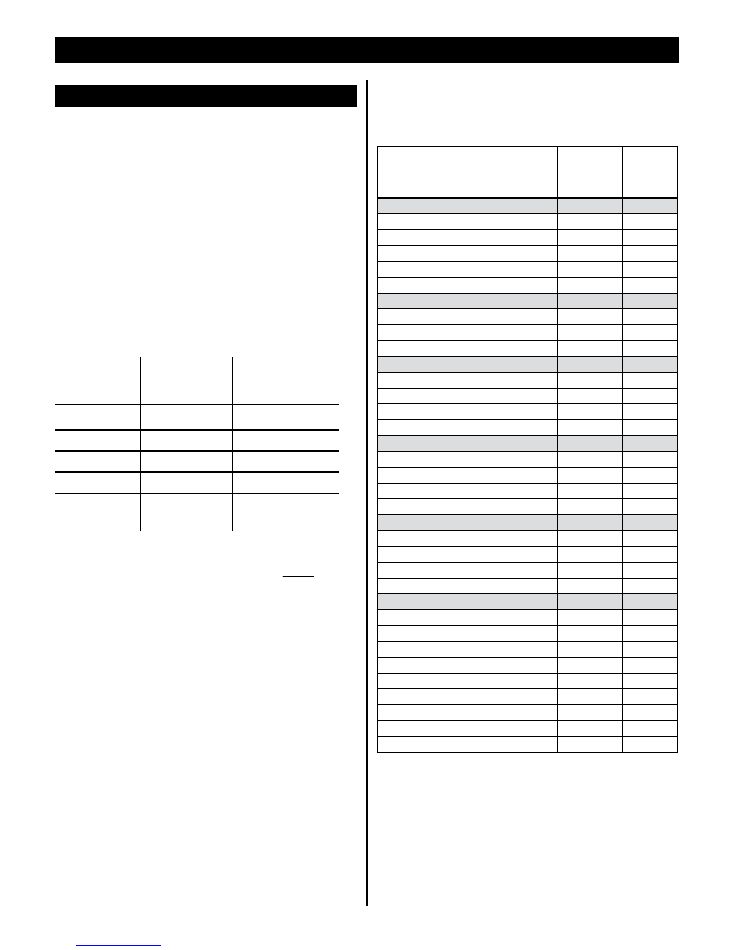
6
English
ELECTRICAL
GENERATOR CApACITy
Make sure the generator can supply enough continuous (running)
and surge (starting) watts for the items you will power at the
same time. Follow these simple steps.
1. Select the items you will power at the same time.
2. Total the continuous (running) watts of these items. This
is the amount of power the generator must produce to
keep the items running. See the wattage reference chart
at right.
3. Estimate how many surge (starting) watts you will need.
Surge wattage is the short burst of power needed to start
electric motor-driven tools or appliances such as a circular
saw or refrigerator. Because not all motors start at the
same time, total surge watts can be estimated by adding
only the item(s) with the highest additional surge watts to
the total rated watts from step 2.
Example:
Tool or
Appliance
Continuous
(Running)
Watts
Surge
(Starting) Watts
CD Player
100
0
Space Heater
1800
0
Drill
500
0
Light (75 Watts)
75
75
2475 Total
Running Watts
75 Highest Surge
Watts
Total Continuous (Running) Watts
2475
Plus Highest Additional Surge Watts
+ 75
Equals Total Generator Output Required
2550
pOWER mANAGEmENT
To prolong the life of the generator and attached devices, it
is important to take care when adding electrical loads to the
generator. There should be nothing connected to the generator
outlets before starting its engine. The correct and safe way to
manage generator power is to sequentially add loads as follows:
1. With nothing connected to the generator, start the engine
as described later in this manual.
2. Plug in and turn on the first load, preferably the largest
load you have.
3. Permit the generator output to stabilise (engine runs
smoothly and attached device operates properly).
4. Plug in and turn on the next load.
5. Again, permit the generator to stabilise.
6. Repeat steps 4 and 5 for each additional load.
Never add more loads than the generator capacity. Take
special care to consider surge loads in generator capacity as
previously described.
CAUTION:
Do not overload the generator’s capacity. Exceeding the
generator’s wattage/amperage capacity can damage the
generator and/or electrical devices connected to it.
Tool or Appliance
Typical
Continuous*
(Running)
Watts
Typical
surge
(starting)
Watts
Essentials
Light Bulb − 75 Watt
75
75
Refrigerator/Freezer
700
2200
Sump Pump − 1/2 HP
1050
2200
Water Well Pump − 1/3 HP
1000
1500
Electric Water Heater
4000
0
Heating/Cooling
Furnace Fan − 1/2 HP
800
2350
Window AC − 10,000 BTU
1200
1800
Space Heater
1800
0
Kitchen
Microwave Oven − 1000 Watt
1000
0
Coffee Maker
1000
0
Electric Stove − Single Element
2100
0
Toaster Oven
1200
0
family Room
VCR
100
0
CD/DVD Player
100
0
Stereo Receiver
450
0
Colour Television − 27 in.
500
0
Other
Security System
500
0
Curling Iron
1500
0
Garage Door Opener − 1/2 HP
875
2350
Hair Dryer − 1/2 HP
1250
0
DIy/Job site
Quartz Halogen Work Light
1000
0
Airless Sprayer − 1/3 HP
600
1200
Reciprocating Saw
960
0
Electric Drill − 1/2 HP
600
900
Circular Saw − 7-1/4 in.
1400
2300
Miter Saw − 10 in.
1800
1800
Planer/Jointer − 6 in.
1800
1800
Table Saw/Radial Arm Saw − 10 in.
2000
2000
Air Compressor − 1 HP
1600
4500
*Wattages listed are approximate. Check tool or appliance for actual wattage.
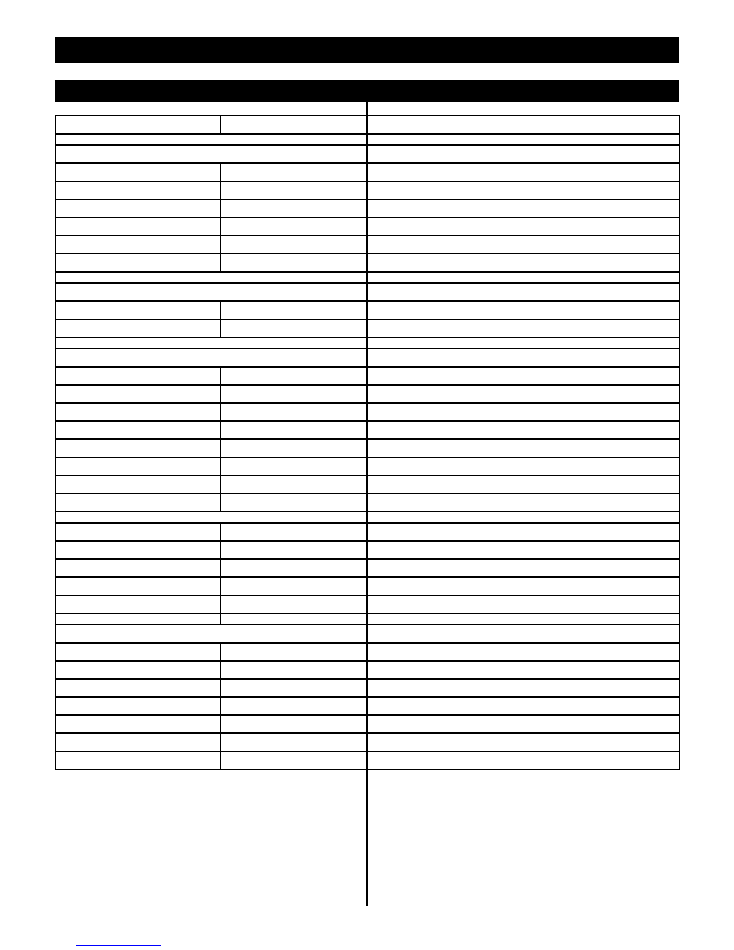
7
English
fEATUREs
model
AGN2400B
AC Output
AC Frequency (Hz)
50
AC Output voltage (V)
230
Rated AC Output (W)
2,000
Rated Current (A)
8.7
Circuit Breaker (A)
9
Power Factor
1.0
DC Output
Volts
12
Amps
8.3
Engine
Engine Number
UP168
Engine Type
4-Stroke; air-cooled OHV; Gasoline
Bore x Stroke
68x45
Displacement (cc)
163
Starting System
recoil
Fuel Type
Unleaded fuel
Lubrication oil
SAE 10W/30
Engine Oil Volume(L)
0.6 L
Fuel Tank Capacity (l)
15
Max. Output (hp)
5.5
Max Output (rpm)
3,600
Full Load (h)
11
Half Load (h)
20.0
Approvals
CE
Yes
Euro Emission
Yes
4m Noise Level LpA dB (A)
75
4m Noise Level LwA dB (A)
95
Uncertainty dB (A)
2
7m Noise Level LpA dB (A)
70
7m Noise Level LwA dB (A)
90
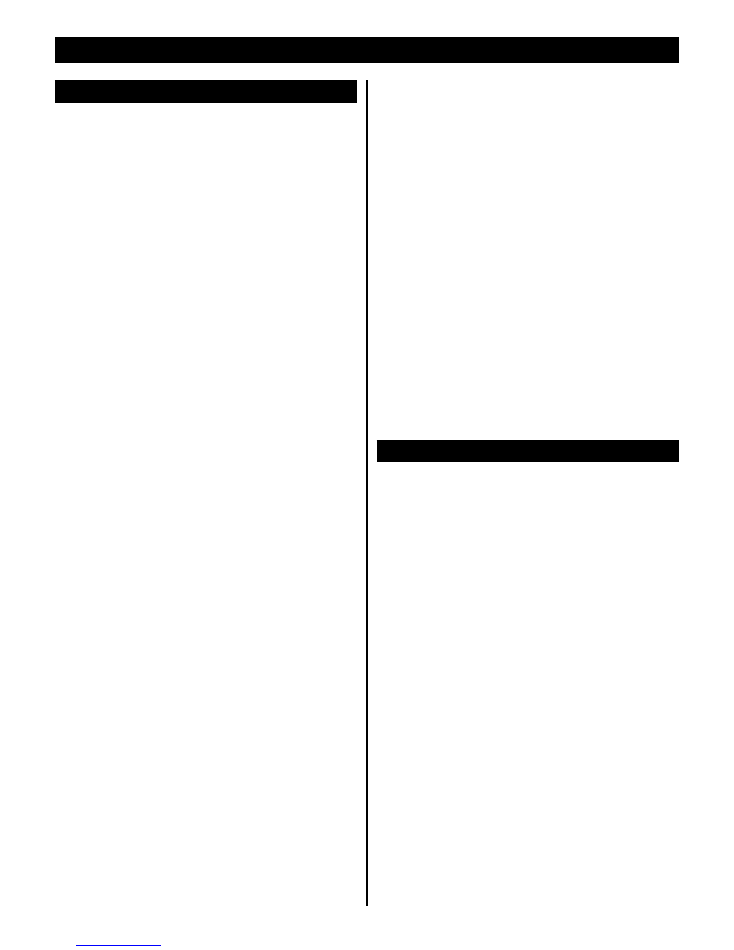
8
English
fEATUREs
KNOW yOUR GENERATOR
See Figure 3.
The safe use of this product requires an understanding of the
information on the product and in this operator’s manual as well
as a knowledge of the project you are attempting. Before use
of this product, familiarise yourself with all operating features
and safety rules.
AC CIRCUIT BREAKER
The circuit breaker is provided to protect the generator against
electrical overload and can be used to turn the generator’s
electrical power on or off.
AIR fILTER
The air filter helps to limit the amount of dirt and dust drawn
into the unit during operation.
CHOKE LEVER
The choke lever is used when starting the engine.
ENGINE sWITCH
The engine switch is used in combination with the recoil starter
grip to start the generator. It is also used to turn the generator off.
fUEL LEVEL GAUGE
Consult the fuel level gauge to determine the amount of fuel
remaining in the generator.
fUEL TANK
15 litres
fUEL VALVE
The flow of fuel through the generator is controlled by the
position of the fuel valve.
GROUND TERmINAL
The ground terminal is used to assist in properly grounding
the generator to help protect against electrical shock. Consult
with a local electrician for grounding requirements in your area.
OIL DRAINAGE BOLT
When changing the engine oil, the oil drainage bolt is loosened
to allow old engine oil to be drained.
OIL CAp/DIpsTICK
Remove the oil fill cap to check and add oil to the generator
when necessary.
RECEpTACLEs
Your generator has the following single phase, 50 Hz outlets:
one 230 Volt AC, 16 Amp receptacle. These can be used for
operating appropriate appliances, electrical lighting, tools, and
motor loads.
RECOIL sTARTER GRIp
The recoil starter grip is used (along with the engine switch) to
start the generator’s engine.
DC TERmINALs
The DC terminals may ONLY be used for charging 12 volt
automotive type batteries.
The terminals are colored red to identify the positive (+) terminal
and black to identify the negative (-) terminal. The battery must
be connected to the generator DC terminals with the proper
polarity ( battery positive to generator red terminal and battery
negative to the generator black terminal).
DC CIRCUIT pROTECTOR
The DC circuit protector automatically shuts off the DC battery
charging circuit when the DC charging circuit is overloaded, when
there is a problem with the battery, or when the connections
between the battery and the generator are improper.
AssEmBLy
UNpACKING
This product has been shipped completely assembled.
n
Remove one end of the box and carefully slide out the
generator and any accessories.
NOTE:
The generator is heavy. If you must lift the unit out
of the box, get another person to help you and lift with your
legs, not your back.
n
Inspect the unit carefully to make sure no damage occurred
during shipping.
n
Do not discard the packing material until you have carefully
inspected and satisfactorily operated the product.
n
If any parts are damaged or missing, please contact your
nearest authorised service centre for assistance.
pACKING LIsT
Generator
Spark Plug Wrench
Oil Bottle / Oil Funnel
Handle and wheels
Operator’s Manual
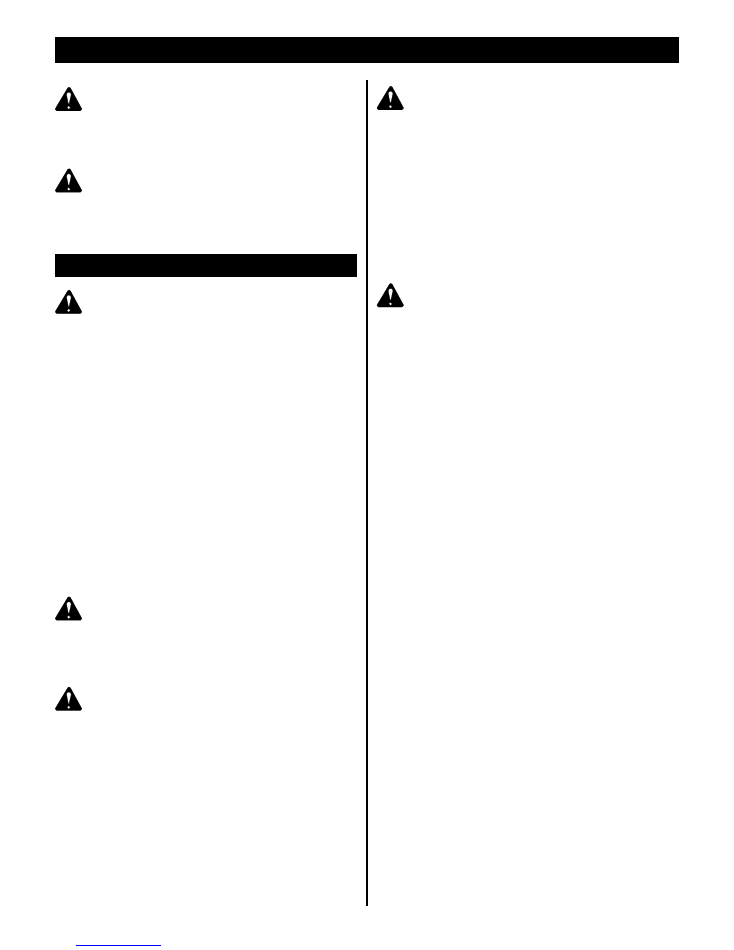
9
English
WARNING:
If any parts are damaged or missing do not operate
this product until the parts are replaced. Failure to
heed this warning could result in serious personal
injury.
WARNING:
Do not attempt to modify this tool or create
accessories not recommended for use with this
tool. Any such alteration or modification is misuse
and could result in a hazardous condition leading to
possible serious personal injury.
OpERATION
DANGER:
Carbon monoxide.
Using a generator indoors WILL
KILL YOU IN MINUTES.
Generator exhaust contains high levels of carbon monoxide
(CO), a poisonous gas you cannot see or smell. If you can
smell the generator exhaust, you are breathing CO. But even
if you cannot smell the exhaust, you could be breathing CO.
n
Never use a generator inside homes, garages,
crawlspaces, or other partly enclosed areas. Deadly
levels of carbon monoxide can build up in these areas.
Using a fan or opening windows and doors does NOT
supply enough fresh air.
n
ONLY use a generator outdoors and far away from open
windows, doors, and vents. These openings can pull in
generator exhaust.
Even when you use a generator correctly, CO may leak into
the home. ALWAYS use a battery-powered or battery-backup
CO alarm in the home.
If you start to feel sick, dizzy, or weak after the generator has
been running, move to fresh air RIGHT AWAY. See a doctor.
You could have carbon monoxide poisoning.
DANGER:
Failure to properly ground generator can result in
electrocution, especially if the generator is equipped
with a wheel kit. Generators have to be properly
grounded to an approved earth ground. Call an
electrician for local grounding requirements.
WARNING:
Do not allow familiarity with tools to make you
careless. Remember that a careless fraction of a
second is sufficient to inflict serious injury.
WARNING:
Do not use any attachments or accessories not
recommended by the manufacturer of this product.
The use of attachments or accessories not
recommended can result in serious personal injury.
AppLICATIONs
This generator is designed to supply electrical power for
operating compatible electrical lighting, appliances, tools,
and motor loads.
BEfORE OpERATING THE UNIT
Position the generator on a flat surface before checking fluid
levels or adding fluid.
CAUTION:
Attempting to start the engine before it has been
properly filled with oil will result in equipment failure.
CHECKING/ADDING OIL
See Figure 4.
Engine oil has a major influence on engine performance and
service life. For general, all-temperature use, SAE 10W-40 is
recommended. Always use a 4-stroke motor oil that meets or
exceeds the requirements for API service classification SJ.
NOTE:
Non-detergent or 2-stroke engine oils will damage
the engine and should not be used.
n
Unscrew the oil cap/dipstick and remove.
n
Wipe dipstick clean and re-seat in hole; do not re-thread.
n
Remove dipstick again and check oil level. Oil level
should fall within the level indicator area on the dipstick.
n
If level is low, add engine oil until the fluid level rises
to the upper portion of the level indicator area on the
dipstick.
n
Replace and secure the oil cap/dipstick.
CHECKING/ADDING fUEL
See Figure 5.
n
Check the fuel level gauge. If fuel is needed, continue
with the next step.
n
Remove the fuel cap.
n
Fill the fuel tank to 25mm below the top of the fuel neck.
n
Replace and secure the fuel cap.
NOTE:
Always use unleaded gasoline with a pump octane
rating of 86 or higher. Never use old, stale, or contaminated
unleaded fuel, and do not use an oil/gas mixture. Do not allow
dirt or water into the fuel tank.
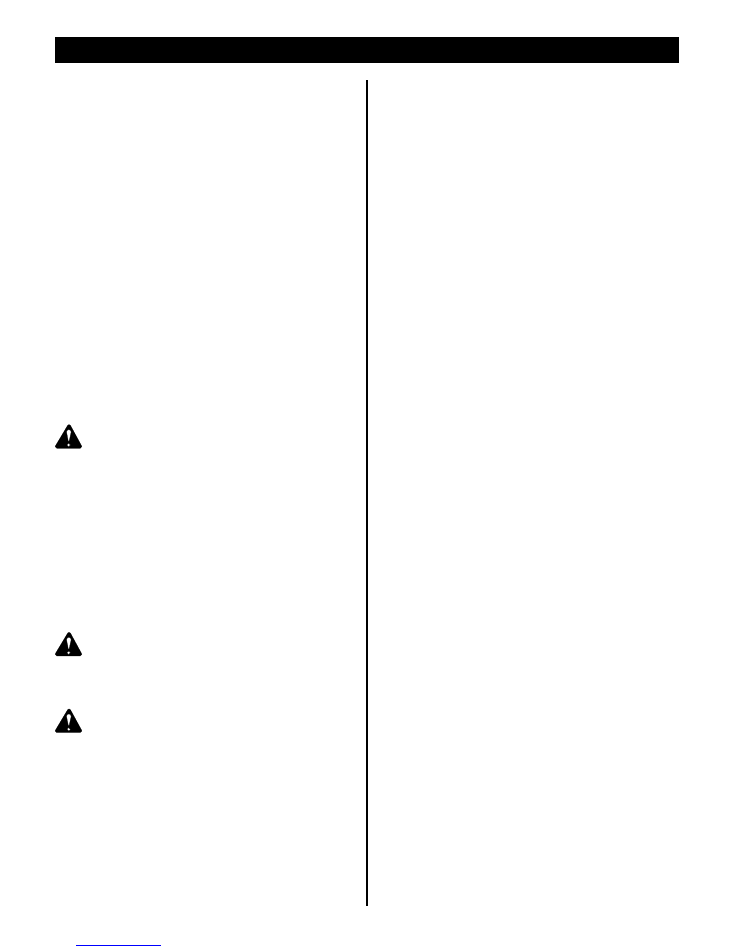
10
English
UsING fUEL sTABILIsER
Fuel gets old, oxidizes, and breaks down over time. Adding a
fuel stabiliser extends the usable life of fuel and helps prevent
deposits from forming that can clog the fuel system. Follow
fuel stabiliser manufacturer’s directions for correct ratio of
stabiliser to fuel.
n
Add stabiliser to fuel tank, then fill with unleaded fuel
following previous instructions.
NOTE:
Fuel stabiliser and unleaded fuel can be mixed
prior to filling the tank by using a gas can or other
approved fuel container and shaking gently to combine.
n
Replace and secure the fuel tank cap.
n
Start and run the engine for at least 5 minutes to allow
stabiliser to treat the entire fuel system.
OXyGENATED fUELs
DO NOT UsE E85 fUEL. IT WILL VOID yOUR
WARRANTy.
NOTE:
Some conventional petrol are blended with alcohol or
an ether compound. This type of petrol is collectively referred
to as oxygenated fuel; in Australia known as Ethanol. The use
of ethanol fuel, or fuels containing ethanol is not recommended
for this product.
CAUTION:
On a level surface with the engine off, check the oil
level before each use of the generator.
AC OpERATION
n
Unplug all loads from the generator.
n
Switch the AC circuit breakers to the OFF (O) position.
n
Start the engine (refer to "STARTING THE ENGINE"
section. (later on this page)
n
Switch the AC circuit breakers to the ON ( I ) position.
n
Plug in the appliance.
DC OpERATION
The DC terminals may ONLY be used for charging 12 volt
automotive type batteries.
CAUTION:
The battery gives off explosive gases; keep
sparks, flames and cigarettes away. provide
adequate ventilation when charging or using
batteries.
CAUTION:
Battery posts, terminals and related accessories
contain lead and lead compounds. Wash hands
after handling.
Connecting the battery cables:
n
Before connecting the battery charging cables to
a battery that is installed in a vehicle, disconnect the
vehicle ground battery cable from the battery negative (-)
terminal.
n
Connect the positive (+) battery cable to the battery
positive (+) terminal.
n
Connect the other end of the positive (+) battery cable to
the generator positive (+) terminal.
n
Connect the negative (-) battery cable to the battery
negative (-) terminal.
n
Connect the other end of the negative (-) battery cable to
the generator negative (-) terminal.
n
Start the engine. (refer to "STARTING THE ENGINE"
section)
NOTE:
Do not start the vehicle while the battery charging
cable is connected and the generator is running. The
vehicle or the generator may be damaged.
An overloaded DC circuit, excessive current draw by the battery,
or a wiring problem will trip the DC circuit protector (PUSH
button extends out). If this happens, wait a few minutes before
pushing in the circuit protector to resume operation. If the DC
circuit protector continues to go OFF, discontinue charging and
see your nearest authorised service centre.
Disonnecting the battery cables:
n
Disconnect the negative (-) battery cable from the
generator negative (-) terminal.
n
Disconnect the other end of the negative (-) battery cable
from the battery negative (-) terminal.
n
Disconnect the positive (+) battery cable from the
generator positive (+) terminal.
n
Connect the other end of the positive (+) battery cable to
the battery positive (+) terminal.
n
Reconnect the vehicle ground battery cable to the battery
negative (-) terminal.
sTARTING THE ENGINE
See Figures 6 - 8.
NOTE:
If location of generator is not level, the unit may not
start or may shut down during operation.
n
Turn the fuel valve to the ON position.
n
Move the choke lever to the START position.
NOTE:
If engine is warm or the temperature is above
10˚C, push the choke lever in to the RUN position.
n
Put the engine switch in the ON ( I ) position.
n
Pull the recoil starting grip until the engine runs (a
maximum of 6 times).
NOTE:
Do not allow the grip to snap back after starting;
return it gently to its original place.
n
Allow the engine to run for 30 seconds, then move the
choke lever in to the RUN position.
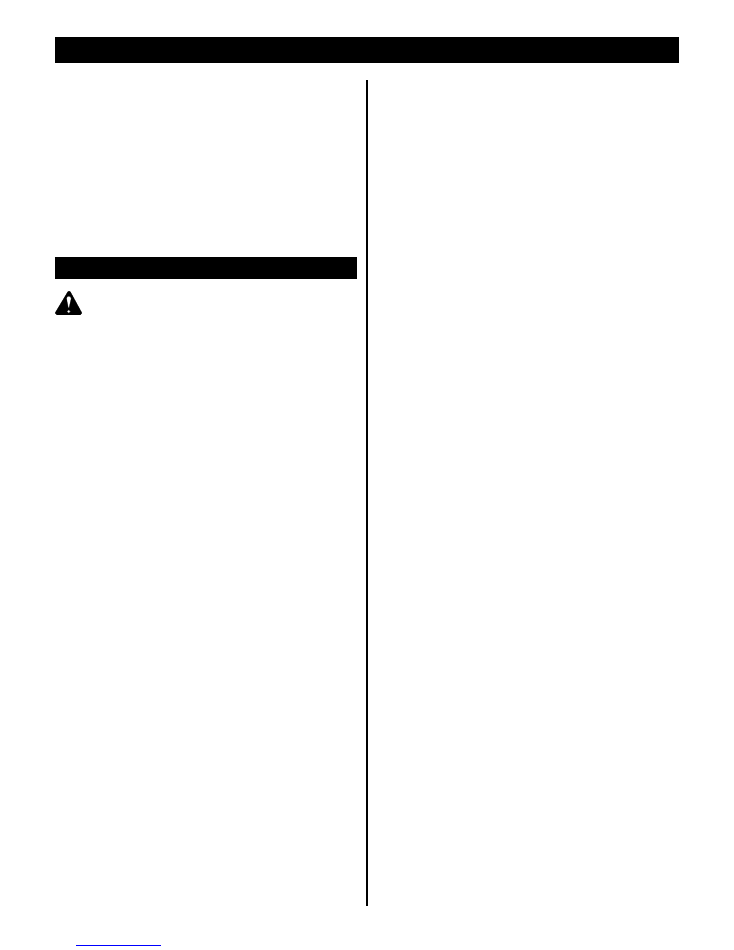
11
English
sTOppING THE ENGINE
See Figures 6- 7.
To stop the engine under normal operating conditions:
n
Remove any load from the generator.
n
Switch the AC circuit breakers to the OFF position.
n
Disconnect DC battery charging cables.
n
Turn the fuel valve to the OFF position.
n
Put the engine switch in the OFF ( O ) position.
n
Turn the key to "OFF" position (Electric start only).
To stop the engine in an emergency situation:
n
Put the engine switch in the OFF ( O ) position.
mAINTENANCE
WARNING:
When servicing, use only identical Ryobi
replacement parts. Use of any other parts may
create a hazard or cause product damage.
Only the parts shown on the parts list are intended to be repaired
or replaced by the customer. All other parts should be replaced
at an authorised service centre.
GENERAL mAINTENANCE
Keep the generator in a clean and dry environment where it is
not exposed to dust, dirt, moisture, or corrosive vapors. Do not
allow the cooling air slots in the generator to become clogged
with foreign material such as leaves, snow, etc.
Do not use a garden hose to clean the generator. Water entering
the fuel system or other internal parts of the unit can cause
problems that will decrease the life of the generator.
To clean the unit:
n
Use a soft bristle brush and/or vacuum cleaner to loosen
and remove dirt and debris.
n
Clean air vents with low pressure air that does not
exceed 25 psi.
n
Wipe the exterior surfaces of the generator with a damp
cloth.
CHECKING/CLEANING AIR fILTER
See Figure 9.
For proper performance and long life, keep air filters clean.
n
Lift the latches located at the top and bottom of the air
filter cover. Remove the cover and set aside.
n
Remove the filter elements.
n
If the filter elements are dirty, clean with warm, soapy
water. Rinse and let dry.
n
Apply a light coat of engine oil to the elements, then
squeeze it out.
n
Replace the elements in the air filter unit.
n
Replace the air filter cover and close latches to secure.
NOTE:
Do not run the generator without the air filter.
Rapid engine wear will result.
CHANGING ENGINE OIL
See Figure 10.
n
Remove the oil cap/dipstick.
n
Place a container underneath the oil drainage bolt to
collect used oil as it drains.
n
Unscrew the oil drainage bolt and remove.
n
Allow oil to drain completely.
n
Reinstall the oil drainage bolt and tighten securely.
n
Refill with oil following the instructions in the
Checking/
Adding Oil
section.
n
Reinstall the oil cap/dipstick.
NOTE:
Used oil should be disposed of at an approved
disposal site. See your local oil retailer for more information.
CLEANING fUEL sEDImENT CUp
See Figure 11.
The sediment cup prevents dirt and water that may have gotten
into the fuel tank from entering the carburetor. If the engine
has not been run for a long time, the sediment cup should be
cleaned before use.
n
Turn the fuel valve to the OFF position.
n
Remove the sediment cup using a 10 mm wrench (not
provided).
n
Remove the O-ring and filter.
n
Clean each of the parts in carburetor cleaner or any
comparable cleaning product.
n
Reinstall the filter, O-ring, and sediment cup. Tighten with
wrench to secure.
n
Return the fuel valve to ON position and check for leaks.
spARK pLUG mAINTENANCE
See Figure 12.
The spark plug must be properly gapped and free of deposits
in order to ensure proper engine operation. To check:
n
Remove the spark plug cap.
n
Clean any dirt from around base of spark plug.
n
Remove spark plug using wrench provided.
n
Inspect spark plug for damage, and clean with a wire
brush before reinstalling. If insulator is cracked or
chipped, spark plug should be replaced.
NOTE:
If replacing, use the following recommended
spark plugs or equivalent: Champion RN11YC or NGK
BPR6ES.
n
Seat spark plug in position; thread in by hand to prevent
cross-threading.
n
Tighten with wrench to compress washer. If spark plug
is new, use 1/2 turn to compress washer appropriate
amount. If reusing old spark plug, use 1/8 to 1/4 turn for
proper washer compression.
NOTE:
An improperly tightened spark plug will become
very hot and could damage the engine.

12
English
CLEANING THE EXHAUsT pORT AND mUffLER
Depending on the type of fuel used, the type and amount of
oil used, and/or your operating conditions, the exhaust port
and muffler may become blocked with carbon deposits. If
you notice a power loss with your petrol-powered tool, you
may need to remove these deposits to restore performance.
We highly recommend that only qualified service technicians
perform this service.
spARK ARREsTOR
Product users in some areas, must comply with fire prevention
regulations. This product is equipped with a spark arrestor.
DRAINING fUEL TANK / CARBURETOR
When not using a fuel stabiliser, draining the fuel from the tank
and carburetor before storage may help prevent gum deposits
in the fuel system.
DRAINING THE fUEL TANK
See Figure 13.
n
Turn the engine switch OFF ( O ).
n
Close fuel valve.
n
Remove the fuel line from the barb by squeezing the
ends of the retaining clip and sliding the fuel line off.
n
Install one end of a drain line over the barb, and place
the other end in a fuel container large enough to catch
the fuel being drained from the tank.
n
Open fuel valve.
n
When the fuel has drained from the tank, close the fuel
valve and reinstall fuel line on barb.
DRAINING THE CARBURETOR
See Figure 2.
n
Turn the engine switch off ( O ).
n
Close the fuel valve.
n
Position an approved fuel container under the carburetor
drain screw to catch fuel; loosen the screw.
n
Allow fuel to drain completely into container.
n
Retighten drain screw.
NOTE:
After draining the fuel tank and carburetor, start
the engine and allow it to run until the unit runs out of
fuel. Consult hazardous waste management guidelines in
your area for the proper way to dispose of used fuel.
TRANspORTING
n
Turn engine switch OFF ( O ).
n
Close the fuel valve.
n
Make sure engine and exhaust of unit is cool.
n
Keep unit level to prevent fuel spillage.
n
Do not drop or strike unit or place under heavy objects.
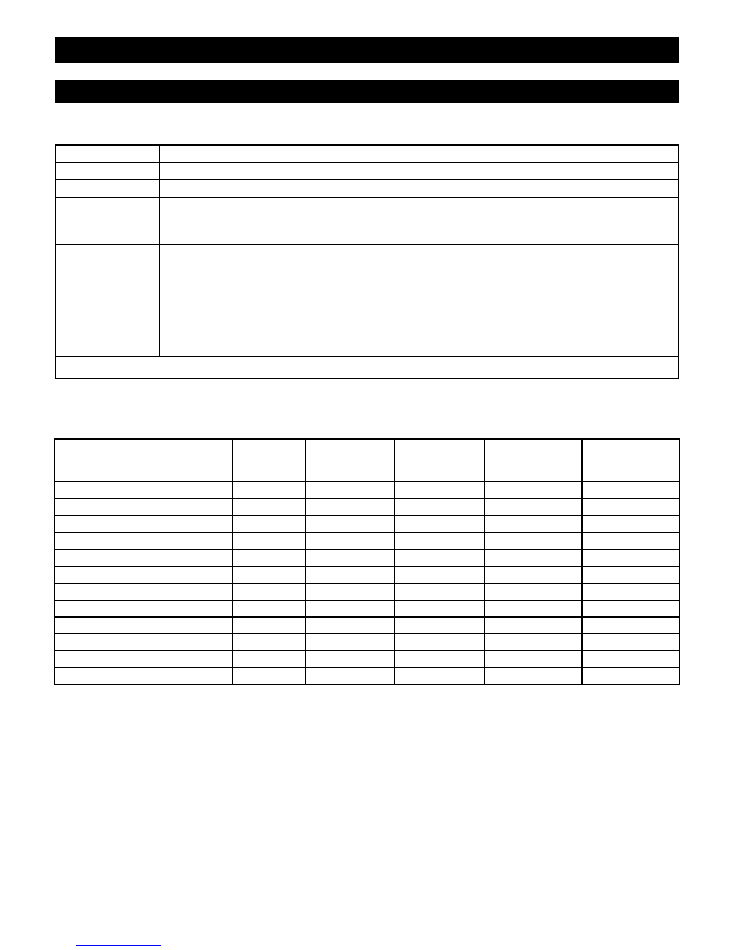
13
English
mAINTENANCE
sTORAGE
When preparing the generator for storage, follow the guidelines below.
sTORAGE TImE
pRIOR TO sTORING
Less than 1 month
n
No special preparation is required.
1 to 2 months
n
Empty fuel from fuel tank.
2 months to 1 year
n
Empty fuel from fuel tank.
n
Drain fuel from carburetor.
n
Clean fuel sediment cup.
1 year or more
n
Empty fuel from fuel tank.
n
Drain fuel from the carburetor.
n
Clean fuel sediment cup.
n
Remove spark plug.
n
Put a tablespoon of engine oil into the spark plug cylinder. Turn the engine slowly with the pull rope to
distribute the oil.
n
Reinstall spark plug.
n
Change engine oil.
*Use unleaded fuel stabilisers formulated to extend storage life. For recommendations, contact your nearest authorized service center.
mAINTENANCE sCHEDULE
Before
each use
After 1st month
or 20 hours of
operation
Every 3 months
or 50 hours of
operation
Every 6 months
or 100 hours
of operation
Every year or
after 300 hours
of operation
Check Engine Oil
n
Change Engine Oil
n
n
Check Air filter
n
Clean Air filter
n
Change Air filter
n
Clean Carburetor sediment Cup
n
Check/Adjust spark plug
n
Replace spark plug
n
Check/Adjust Idle speed
n
Check/Adjust Valve Clearance*
n
Clean fuel Tank and filter*
n
Check fuel Tube
n
* These items should only be carried out by an authorized service center.
NOTE:
Maintenance should be performed more frequently when generator is used in dusty areas.
When generator has exceeded the maximum figures specified in the table, maintenance should still be cycled according to
the intervals of time or hours stated herein.
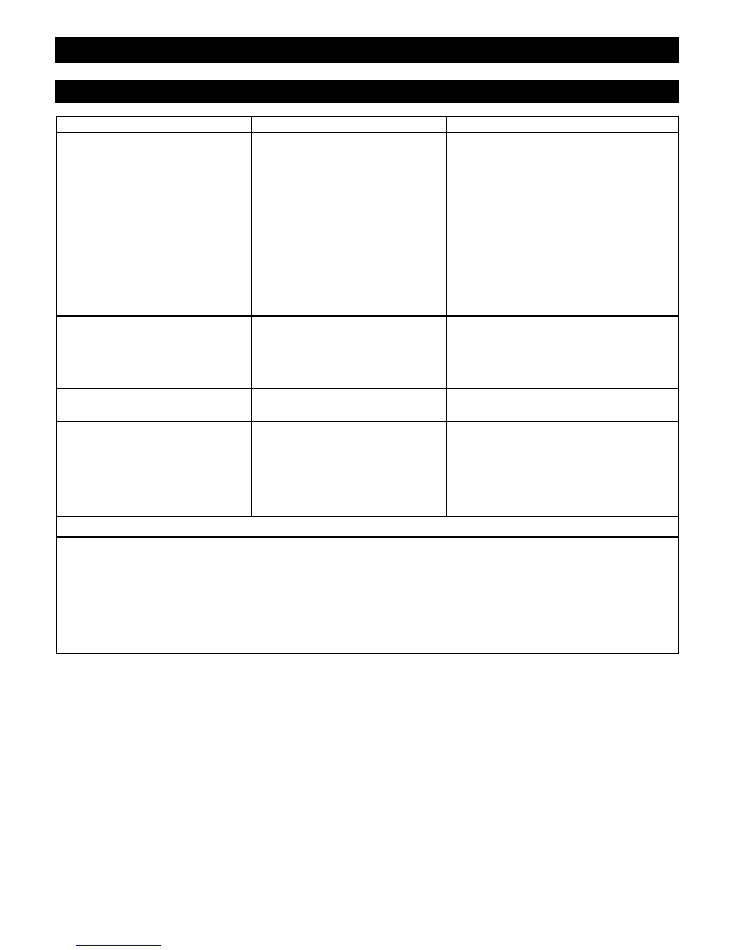
14
English
mAINTENANCE
pROBLEm
pOssIBLE CAUsE
sOLUTION
Engine will not start.
Engine switch is OFF.
No fuel.
Oil level is low.
Fuel valve is OFF.
Spark plug faulty, fouled, or improperly
gapped.
Fuel is not reaching carburetor.
Choke is OPEN.
Engine stored without treating or draining
unleaded fuel, or refueled with bad
unleaded fuel.
Turn engine switch to ON.
Fill fuel tank.
Check engine oil level and fill, if necessary.
Turn fuel valve ON.
Replace spark plug.
Clean fuel sediment cup.
Move choke lever out to START.
Drain fuel and carburetor. Refuel with fresh
unleaded fuel.
Engine lacks power.
Fuel element clogged.
Engine stored without treating or draining
unleaded fuel, or refueled with bad
unleaded fuel.
Check air filter element. Clean or replace as
needed.
Drain fuel and carburetor. Refuel with fresh
unleaded fuel.
AC receptacle does not work.
Circuit breaker is OFF.
Item plugged in is defective.
Turn ON the AC circuit breaker.
Try a different item.
Generator makes a “spark knock” or
“pinging” noise.
An occasional light “knocking” or
“pinging” under heavy load is not a cause
for concern. However, if the knocking
or pinging occurs under normal load
at a steady engine speed, the problem
may be with the brand of unleaded fuel
being used.
Switch to a different brand of unleaded fuel,
making sure that the octane rating is 86 or
higher. If problem continues, contact your nearest
authorized service center.
If problem persists after trying the above solutions, contact your nearest authorized service center for assistance.
The following symptoms may indicate problems that will affect the emissions level of the unit:
n
Hard starting or stalling after starting
n
Rough idle
n
Misfiring or backfiring under load
n
Afterburning (backfiring)
n
Black exhaust smoke or high fuel consumption
If you encounter any of these symptoms, have the unit inspected and repaired by the nearest authorized service center.
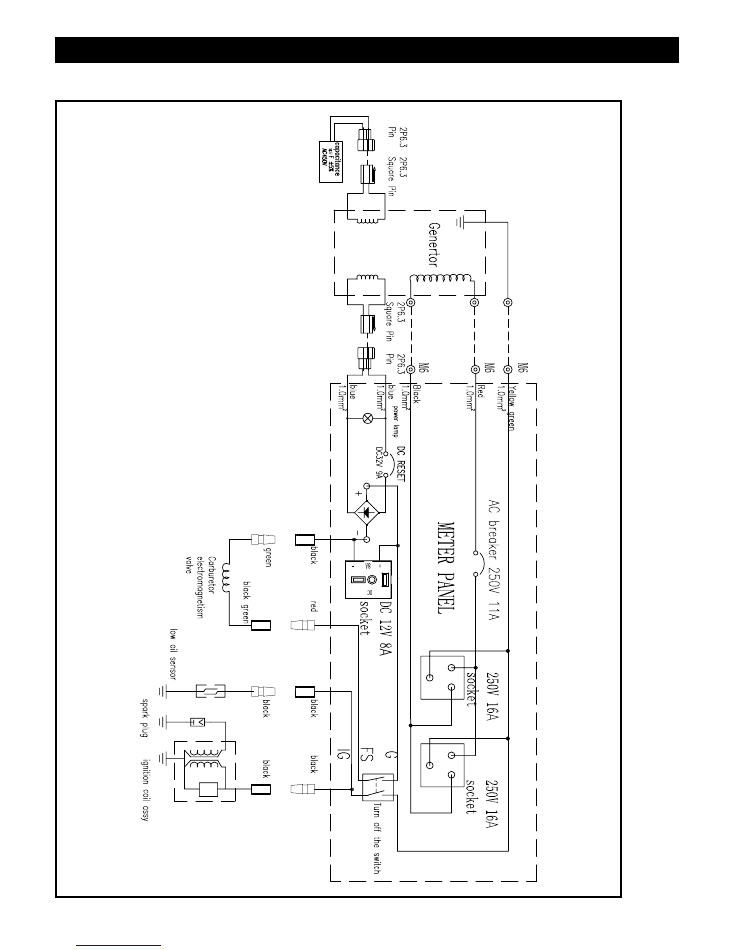
15
English
WIRING DIA
GRAM
- A
GN2400B

LImITED WARRANTy
TTI warrants this outdoor product to be free of defects in material and workmanship for 24 months from the date of purchase by the original purchaser,
subject to the limitations below. Please keep your invoice as proof of date of purchase.
This warranty is only applicable where the product is used for personal and non-commercial purposes.
This warranty does not cover damage
or liability caused by / due to misuse, abuse, accidental or intentional acts by user, improper handling, unreasonable use, negligence, failure by end
user to follow operating procedures outlined in the user’s manual, attempted repair by non-qualified professional, unauthorized repair, modification, or
use of accessories and/or attachments not specifically recommended by authorized party. Please see your local dealer for list of authorized service
centers in your area.
This warranty does not cover belts, brushes, bags, bulbs or any part which ordinary wear and tear results in required replacement during warranty
period. This warranty does not cover transportation cost or consumable items such as fuses and batteries.
This limited warranty is void if the product’s original identification (trade mark, serial number, etc.) markings have been defaced, altered or removed or if
product is not purchased from an authorized reseller or if product is sold AS IS and / or WITH ALL FAULTS.
Where permitted, the provisions of this limited warranty are in lieu of any other written warranty, whether express or implied, written or oral, including
any warranty of MERCHANTABILITY OR FITNESS FOR A PARTICULAR PURPOSE. IN NO EVENT SHALL WE BE LIABLE FOR SPECIAL,
INCIDENTAL, CONSEQUENTIAL OR INCIDENTAL DAMAGES. OUR MAXIMUM LIABILITY SHALL NOT EXCEED THE ACTUAL PURCHASE
PRICE PAID BY YOU FOR THE PRODUCT.
This warranty is applicable only in the European Union, Australia, and New Zealand. Outside these areas, please contact your authorized
Homelite dealer to determine if another warranty applies.
Technical documents are kept by Homelite Far East Co., Ltd. 24/F, 388 Castle Peak Road, Tsuen Wan, N.T., Hong Kong.Declared in 09/2008 by
Homelite Far East Co., Ltd.
The figures quoted are emission levels and are not necessarily safe working levels. Whilst there is a correlation between the emission and exposure
levels, this cannot be used reliably to determine whether or not further precautions are required. Factors that influence the actual level of exposure of
work-force include the characteristics of the work room, the other sources of noise, etc. i.e. the number of machines and other adjacent processes,
and the length of time for which an operator is exposed to the noise. Also the permissible exposure level can vary from country. This information,
however, will enable the user of the machine to make a better evaluation of the hazard and risk.

Machine:
portable Generator set
Name of company: Homelite Far East Co., Ltd.
Address:
24/F, CDW Building,
388 Castle Peak Road,
Tsuen Wan Hong Kong.
RyOBI TECHNOLOGIEs (UK) LImITED
Medina House,
Fieldhouse Lane, Marlow,
Buckinghamshire,
SL7 1TB,
UNITED KINGDOM
Tel: + 44 (0)1628 894400
Fax: +44 (0)1628 894401
Technical helpline: +44 (0) 800 3890305
RyOBI TECHNOLOGIEs sAs
Immeuble Le Grand Roissy
Z.A. du Gué - 35 rue de Guivry
77990 LE MESNIL AMELOT FRANCE
Phone: + 33 (0)1 60 94 69 70
Fax: + 33 (0)1 60 94 69 79
RyOBI BELGIUm
Avenue des Pâquerettes, 55
Zoning artisanal - bâtiment 5
B - 1410 Waterloo
BELGIQUE
Tel : + 32 (0) 2 357 81 40
Fax : + 32 (0) 2 357 81 49
RyOBI ITALIA
Via Vincenzo Borelli, 13
I - 41100 Modena
ITALIA
Tel : + 39 (0) 59 23 84 08
Fax : + 39 (0) 59 24 69 60
RyOBI IBÉRICA
Avenidad de la Industria 52
28820 Coslada - Madrid
ESPANA
Tel : + 34 (0) 91 627 93 26
Fax : + 34 (0) 91 627 93 29
TECHTRONIC INDUsTRIEs (AsIA) CO. LTD
24/F, CDW Building,
388 Castle Peak Road,
Tsuen Wan, Hong Kong.
Tel : + 852 2402 6888
RyOBI TECHNOLOGIEs GmBH
Itterpark 4
D-40724 Hilden
DEUTSCHLAND
Tel: + 49 (0) 2103 2958-0
Fax: + 49 (0) 2103 2958-29
RyOBI TECHNOLOGIEs GmBH
Vertriebsbüro Österreich
Schinitzgasse 13
A-8605 Kapfenberg
Tel.: + 43 (0) 3862 23590-0
Fax: + 43 (0) 3862 23590-25
TECHTRONIC INDUsTRIEs
AUsTRALIA pTy LImITED
Building B, Rosehill Industrial Estate,
3 Shirley Street,
Rosehill NSW 2142
AUSTRALIA
Tel: (02) 8892 1800 or 1300 361 505
Fax: 1800 807 993
TECHTRONIC INDUsTRIEs (NZ) LImITED
27 Clemow Drive, Mt Wellington
PO Box 12-806, Penrose, Auckland
NEW ZEALAND
Tel: + 64 (0) 9 573 0230 Free Call: +64 0800 279 624
Fax: + 64 (0) 9 573 0231
A&m mIDDLE EAsT fZCO
P.O.Box 61254
Jedel Ali, Dubai,
UNITED ARAB EMIRATES
Tel.: + 971 4 8861399
Fax: + 971 4 8861400
TECHTRONIC INDUsTRIEs NORDIC
Stamholmen 147, 4. DK-2650 Hvidovre
DENMARK
Tel.: (+45) 43 56 55 55
Fax: (+45) 43 56 55 56
Type: AGN2400B
Name / title: Sven Eschrich
Director of Engineering
Signature:
1 / 2010
